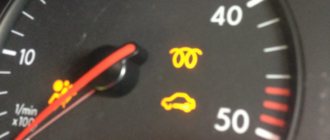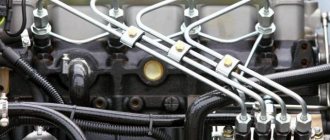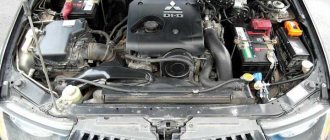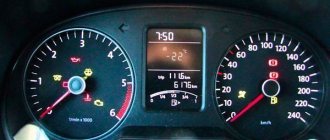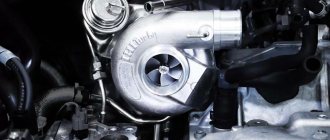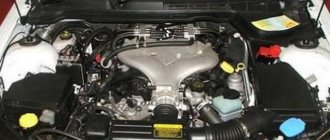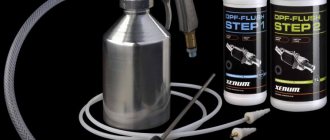A machine that only works in comfortable conditions is worthless. No matter what the temperature outside the window, the car should start, warm up itself and warm up the interior. And the driver must do everything possible to help the car with this. Our winters are not for the weak, and not every engine without preparation will be able to function normally in cold weather of -35 degrees. Anything can happen, and we need to be prepared for anything, so let’s try to imagine that it’s freezing outside and we need to start the diesel engine.
Features of diesel engine operation in winter
Diesel fuel is not as volatile as gasoline, and the operating process of a diesel engine is different from a carburetor engine. It can also be harmful in the cold, but gasoline engines are more resistant to cold. A diesel engine, due to its design features, may have problems starting at low temperatures.
Diesel fuel ignites only under high pressure, so a diesel engine with poor compression may not budge at all in winter. Even if the battery is in perfect condition, with compression at 18-22 atmospheres, the engine may not start even in a heated garage.
Compression does not suddenly drop, so the sled must be prepared in the summer and entered, that is, driven into winter on a prepared diesel engine. Ideally this involves:
- replacing diesel fuel with winter or arctic fuel, depending on what plans the hydrometeorological center has;
- installation of a pre-heater (optional, if you have an extra 4-5 thousand);
- replacing summer oils with winter ones, including transmission oils;
- checking compression, and, if necessary, repairing and restoring rings, timing belt;
- checking the operation of the high pressure fuel pump;
- cleaning and diagnostics of injectors, replacement of fuel filters;
- training or restoration of the battery, thorough check of the starting system;
- diagnostics of glow plugs.
Not a weak list, but if you are not sure of at least one of the points, problems with winter startup are guaranteed.
What happens when starting a car in severe frosts?
Let's consider the fundamental actions of the mechanisms during winding, when outside the thermometer needle drops below - 15 degrees.
- We turn on the ignition, the battery comes to life after a long freeze and a chemical reaction begins, an electric current “runs” through the wires.
- Initially, various sensors are tested and the main computer (ECU) warms up.
- Since this test does not consume a lot of electricity, the battery is still in sleep mode, it is lucky only with cars where the low beam headlights come on immediately when the ignition is turned on.
- By turning the key to the “Start” position, the starter rotates, powered by the car’s batteries. The starter rotates a flywheel located at the end of the crankshaft. Accordingly, the crankshaft and pistons rotate together with the flywheel. In the bushings of the entire gas distribution and on the pistons, especially between the piston rings, there is frozen oil, as well as in some places frozen water, the consequences of fallen condensate.
- Together with the crankshaft, the high-pressure fuel pump and high-pressure fuel pump begin to rotate, supplying diesel fuel to the injectors.
- When the required amount of fuel is in the combustion chamber, and the piston has created the required compression torque, the diesel fuel ignites and the engine starts.
Unlike the warm time of starting a car, in cold weather starting takes much longer, due to the fact that all the mechanisms rotate more heavily.
How to prepare a diesel engine for winter
Let us dwell on the most relevant aspects of preparing the engine for morning winter starts, especially those details that require increased attention not only in winter. Compression in the cylinders, as we have already said, may simply prevent the engine from starting even in the heat, so if the compression ratio is low, you should not be surprised at the refusal to start.
A normal value is 25 or higher, depending on the engine. with compression below this value, any diesel engine will not work properly. If the car behaves decently with a compression of 30 atmospheres in the summer, then it will last a couple more winters. The only thing worth considering is that at temperatures below 20 degrees and compression below 25, it is better not to leave the car in the cold for a long time, but to warm it up once again.
Battery
Diesel cars use more powerful batteries. It is more difficult to turn such an engine, if only because of the high compression, which is about twice as high here as on a gasoline engine. Plus frozen oil, loss of electricity in the cold... In short, winter should be met with an ideal battery with a capacity no lower than that prescribed by the car manufacturer. By the way, how many of them do you have there? Two? We clean the terminals, measure the density of the electrolyte, and visit a familiar electrician. The last two points are rather in reverse order.
Checking the glow plugs
Checking glow plugs is a sacred task before winter starts. The spark plugs are unscrewed and visually checked for functionality using the ancient peasant method: they simply connect the plus side to the positive side of the battery, and the negative side to the body of the car. The candle should heat up red-hot in 3-6 seconds. if this does not happen, without understanding the reasons, the candle is sent to the labor reserves. If the spark plugs are 6 V, then they are checked in pairs. It should be taken into account that if one candle does not work, the second one will not work either. On a cold engine, it doesn’t hurt to check the glow plug relay.
To start or not to start
There are many options to “revive” a frozen car: gentle, tough, and the most extreme options. Before using them, it’s better to think: perhaps you should wait until it thaws on a frosty day and take public transport?
This solution to the issue can save a lot of time, nerves, and money. And you definitely won’t harm your car by sitting idle in the bitter cold of winter.
Several ways to start diesel engines in winter
Before starting a diesel car in cold weather, carefully check the condition of the battery, and if it is normal, you can make your first attempts. If the engine does not start the first time, but turns over, it is worth calcining the spark plugs not once, but several times. You can navigate by the light on the instrument panel or by the click of the relay. the first time, after warming up the spark plugs and waiting for the relay to turn them off, turn off the ignition and repeat the operation after 10-15 seconds. If everything is in order with the spark plugs and the fuel is flowing, the engine should come to life.
Many people use volatile aerosols, but if you use regular medical ether, the effect will be the same, if not better. Ether is injected with a syringe into the air filter and catalyzes the process of ignition of diesel fuel. If you are too lazy to bother with syringes and ether, you can buy HiGear ForsedStart aerosol or the like. If there are no problems with the engine other than frost, the injection should work.
Oil
Nothing special here. If the time has come, then change the engine oil to a thinner one, one of those specified in the instructions. In short, meeting the winter with oil where the first number in the 5W40 type marking is higher than five is not a good idea. Five, in particular, means that the minimum temperature at which it is possible to pump lubricating fluid through the system is 35 degrees below zero, and in this case you should not turn the engine with the starter after minus thirty. If you get started, of course!
Launching from a tug in winter
I would also like to say something about starting the engine from a pusher. We strongly do not recommend doing this, especially if the car is not old. Diesel is an insidious thing and such a start may not be possible without just a broken timing belt, but also with bent valves, a damaged camshaft and other troubles that are not fun to have in the summer, let alone in the winter.
And one more caution. Experienced tractor drivers and KrAZ truck drivers advise splashing a glass of unleaded gasoline into the crankcase. This is also not worth doing, because gasoline causes the oxidation of special additives that are added to winter engine oil, and this has an unimportant effect on the condition of the oil lines and can lead to their clogging. The same is said about diesel fuel. The permissible percentage of kerosene in the fuel when starting a diesel engine is 10%. Under no circumstances should diesel fuel be diluted with gasoline. Advice is advice, but it’s best to prepare the diesel engine for winter ahead of time, so as not to get into unpleasant situations and not be late for anything. Choose good diesel fuel and have clean winter roads!
Let's warm ourselves up
A felt blanket or a car blanket, any kind, even the standard plastic protection of the engine compartment from below and the notorious cardboard in front of the radiator, is a must-have. On other cars, without all this, the engine may reach operating temperature about twenty minutes after the start of the trip. Well, the stove won’t start heating up soon either.
What can be replaced
For a gasoline engine, it is enough to inject 1 cubic meter of 95 gasoline for easy starting. But this will not help for a diesel engine. What can replace such a launch? It is recommended to use a silicone lubricant spray, which is usually used to treat plastic or rubber elements in the car interior. It contains flammable, rapidly evaporating substances and silicone. Suitable for one-time use in a critical situation. However, when the components included in its composition burn, solid substances are obtained that act as an abrasive, causing scuffing of the metal. Therefore, its frequent use is extremely harmful to engine parts.
Scary?
We unwittingly collected almost all the horror stories for diesel drivers. But if you look at it, the main recommendations boil down to keeping the car in good working order, performing all routine maintenance on time and refueling with high-quality fuel. With the latter, of course, sometimes difficulties arise. And even taking this into account, many car owners, when preparing their cars for winter, rarely move beyond the fifth point. Still scared? Then pay attention to the item “additional equipment”. By the way, we plan to develop the topic of additional equipment on the pages of our publication.
